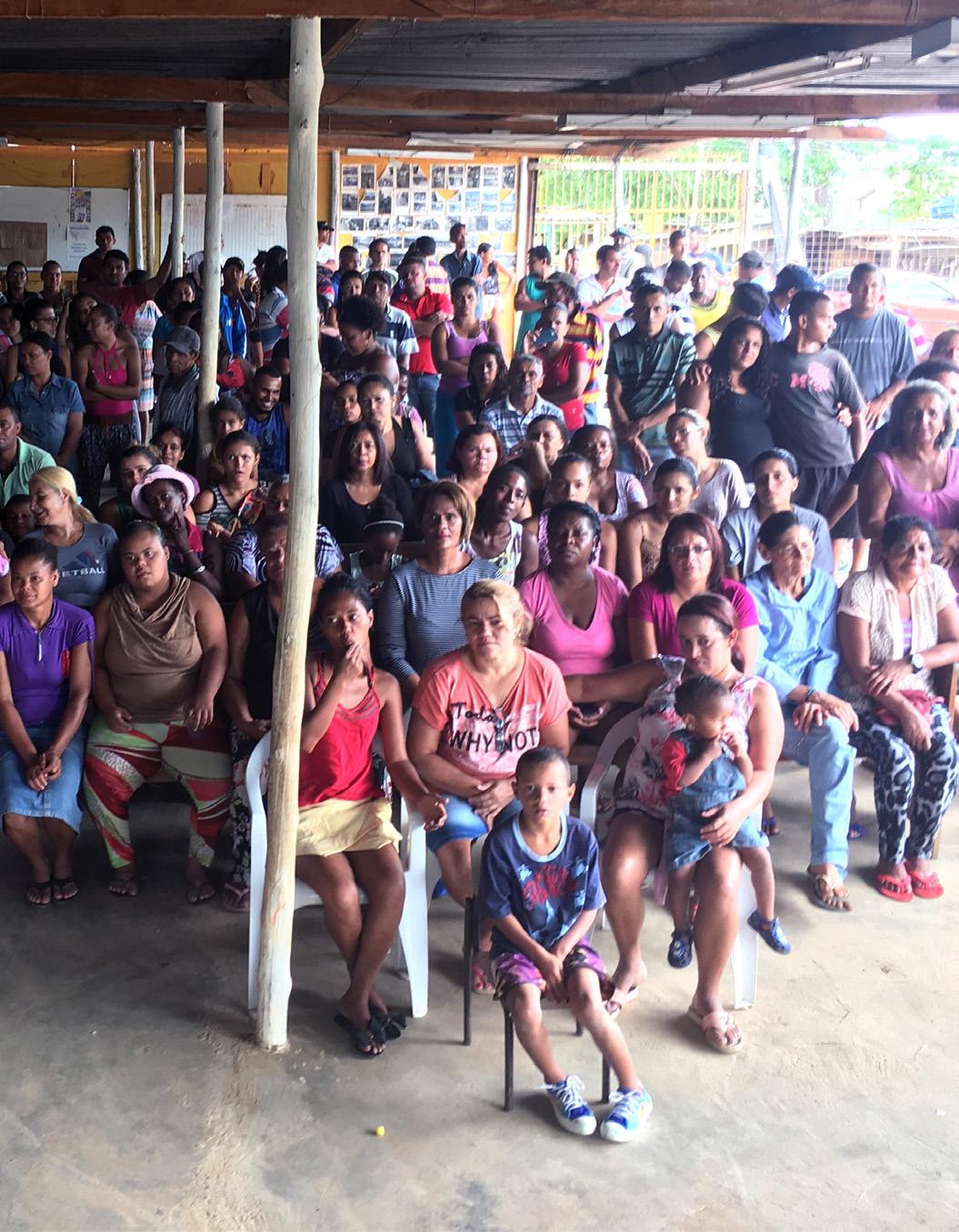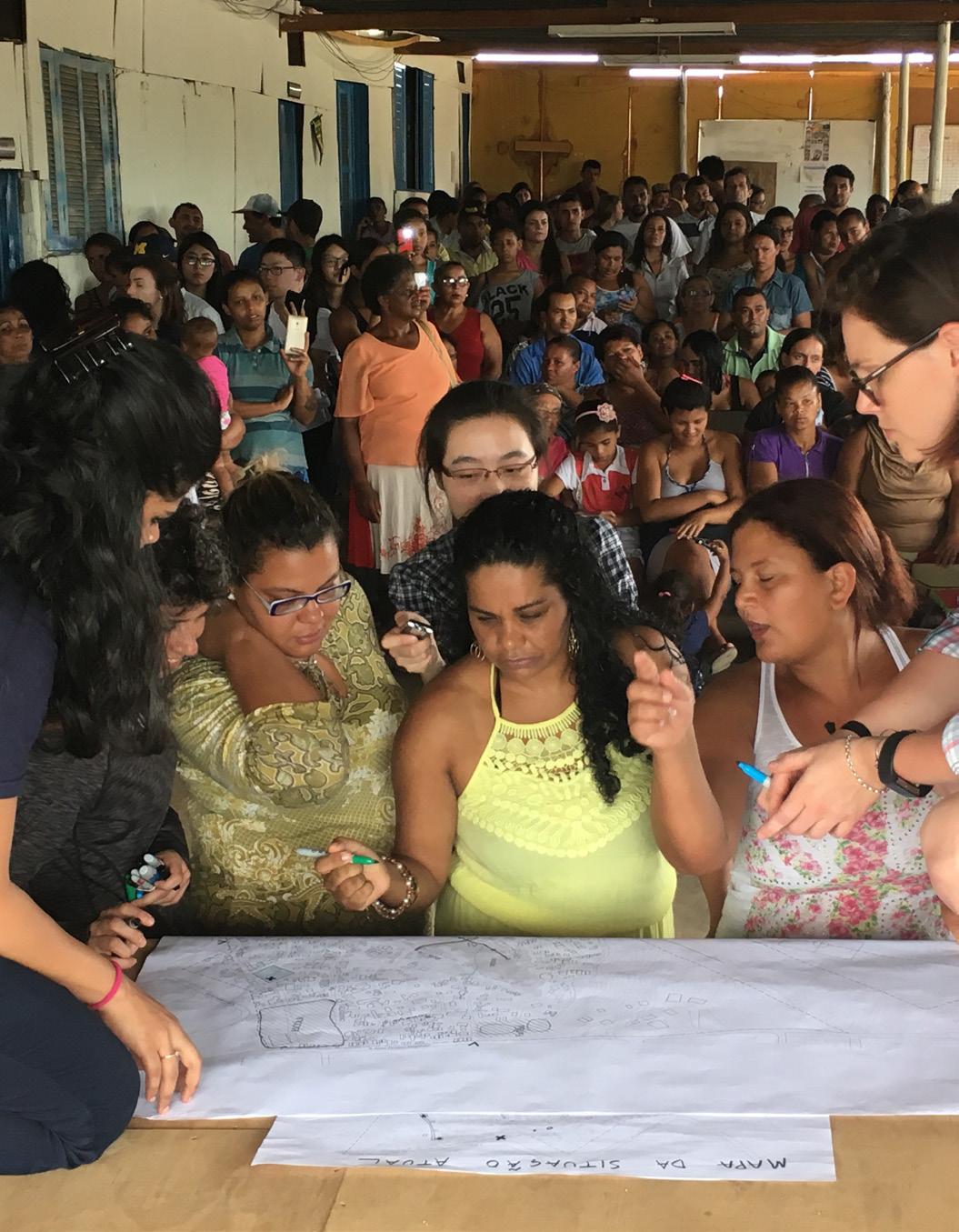
2 minute read
Community Meeting
On the last day in Ocupação Anchieta, Sunday, March 5, Taubman Team students held a two-hour community meeting attended by over 200 residents. The meeting took place at the Ocupação Anchieta Association headquarters from 9:30 am to 11:30 am. At the meeting, students presented the information gathered from the field on February 27 and March 1 and asked community members to provide feedback on the analysis of the Occupation’s existing conditions.
IAG requested changes to the original meeting plans, including no longer administering the residential survey with community members, conducting certain interactive activities, and refraining from showing design prototypes to the community to avoid false hope and confusion. These changes greatly limited the ability of Taubman College Team to receive feedback and prioritize in next planning stages.
75 (left) Community Meeting.
The community meeting was divided into five themes: waste management, housing, infrastructure, the springs and creek, and cultural center. Groups of four to five students from Taubman College Team had developed each topic and designed interactive activities, project visions (including architectural prototypes), and maps to communicate ideas and receive feedback from residents.The community meeting included a large feedback session on maps created by each priority area group, followed by feedback in more conversational form in smaller groups facilitated by translators.
The large assembly included several rounds of speakers from the Association, Taubman College Team, IAG, and Leuven. Presenters expressed frustration with the current political situation surrounding occupations, as well as hope for a better future. Following the meeting introduction, students had the opportunity to present their maps to the community. Our professor, Ana Paula Pimentel Walker facilitated a large group discussion between each priority area group and the residents. Students would tell her what question to translate to the community members and then a translator standing next to the student would translate what the residents’ response was for students to take notes. The five priority area groups presented one map each. Students used these maps to collect information from community members, who indicated their preferences via clapping and by raising comments and concerns voluntarily, that were translated to them by one of the three translators with the team.
After the large assembly, the students in each priority area group created stations around tables showcasing their maps to community members. The format was more of a conversationalstyle workshop that allowed for one-on-one conversations







